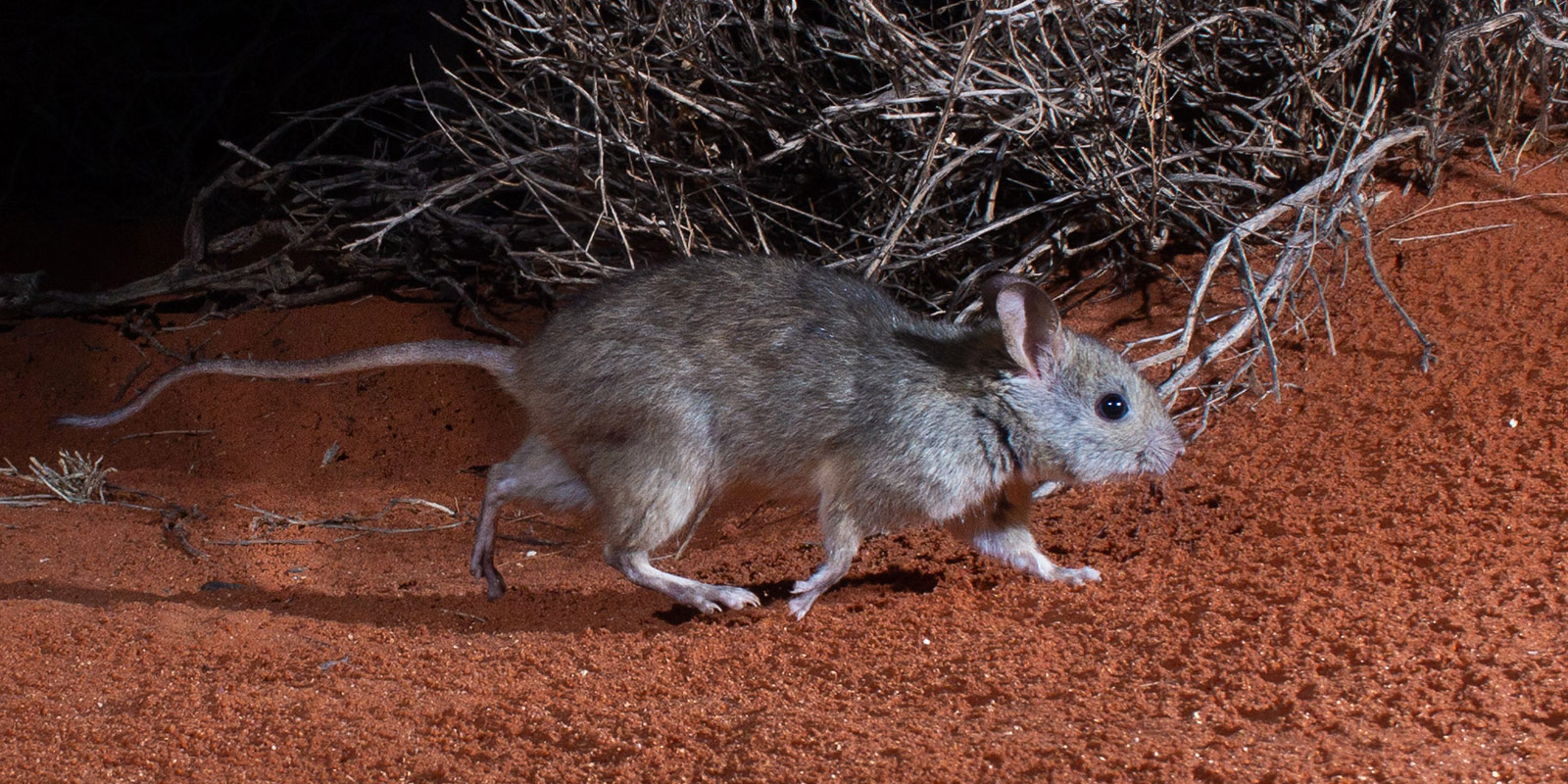Greater Stick-nest Rat
Greater stick-nest rats build shelters larger than wedge-tailed eagle nests 
Arid Recovery was the first fenced haven to protect their re-established population on the mainland
In 1998 we trialled a release of eight greater stick-nest rats (Leporillus conditor) into Arid Recovery. The trial was successful, so we sourced 100 from Reevesby Island in the Spencer Gulf and the population established within the arid ecosystems of the Reserve.
WHAT HAS ARID RECOVERY LEARNT?
Stick-nest rats are elusive
Since their reintroduction in 1999, the greater stick-nest rat has remained elusive. They are hard to trap and so we have had to come up with unique methods to out-trick other trap-happier species that disturb the traps, such as ‘ratstaurants’. They look like a top hat made of 50mm chicken wire mesh and pegged into the ground with droppers. Stick-nest rats can squeeze through the mesh, but other animals can’t dig under.
SPECIES PROFILE
Range and abundance: The greater stick-nest rat was once found across much of the semi-arid and southern arid zone of Australia. By the 1930s, it was confined to only two islands off the South Australian coast – East and West Franklin Islands. The species has now been reintroduced to a number of other island and some fenced mainland havens in WA, SA and NSW.
Shelter: Nests are generally built around a bush, with sticks woven together. Large branches are gnawed to size and added to the nest. Nests can be up to one metre high and two metres wide. Nests provide protection from native predators such as eagles and dingoes. Greater stick-nest rats may have a dominant nest, but they also occasionally move to other nests. They don’t live exclusively in their nests and will often live underground in old bilby burrows to escape the extreme heat over the summer months.
Feeding: Greater stick-nest rats are herbivores, feeding mainly on the leaves, fruit and plant seeds. Since they need a lot of water to survive extreme temperatures, they eat plants with high water content, such as the bladder saltbush. As these plants are also favoured by other herbivores like rabbits and burrowing bettongs, they can be threatened by overgrazing.
Breeding: Breeding can occur in any month of the year. At Arid Recovery, however, this usually happens only in the cooler months. Gestation is 30-40 days and 1-3 young are usually born.
Threats: Stick-nest rats are particularly vulnerable to predation by feral cats and foxes. As early as 1900, they became very rare and were soon extinct on the mainland. A small population survived on the Franklin Islands off the South Australian coast. In addition to predation by feral cats and foxes, rabbits are thought to be a key factor in the decline of the greater stick-nest rat and its now extinct cousin, the lesser stick-nest rat. Successive rabbit plagues devastated the succulent native vegetation that stick-nest rats rely on.